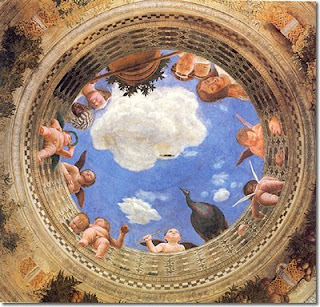When John Grindley showed me round the underground passages at Lingfield Point he mentioned the family’s employment on the site that now spans three generations and I asked him then if it would be possible to meet his father. I’m really grateful to him for organising this and to Eddie for providing a room for the meeting.

John’s father, George (seen here on the right in Alistair Morrison’s terrific photograph – John is on the left.) first worked for Lingfield Point as an employee of Sir Alexander Gibb who with the contractors Laing’s designed and built the factory in the late 1940’s. George spoke of his experience during the war and how he was assigned work.
At the end of his assignment he had two job offers and his father advised him that Paton and Baldwins would be the best one to take because of the care and regard they had for their employees. Patons was a firm with generous pension benefits which George is enjoying today.
George’s whole working life has been taken up with commissioning and operation of the turbines connected to the power house building and the supply of steam around the site.
George’s retirement party was held in the turbine room in 1992 with the turbines themselves being cut apart with wrecking torches just two years later and sold by the receivers in 1994 for a paltry £10,000. Contemporary images show the ‘exhibition quality turbines’ at their peak in the 50’s. George is letting me have a video of this party which I hope to post on this blog eventually.

Although he did not expect the equipment to have a second lease of life during the British American Tobacco years he was devastated to learn of their destruction and glad that it followed his retirement and it had not been his job to supervise their decommissioning.
Talking to him I became acutely aware of the way in which employment practices have changed, the no expense spared approach at the time of the construction giving way to time and motion studies and cheeseparing by management consultants.
When we shot Futurescope 2 Beeman in the Turbine Hall we discovered a suspension file which recorded the procurement of the replacement components up to the 1970’s George knew the files much of it I suspect in George’s handwriting.

George worked at the site for over fifty years and it is inconceivable to me how anybody could work in a single location albeit for two employers for this duration of time. I hope he won’t be offended if I say that I almost feel that he lived in a different world. During our conversation which was full of anecdotes about people who could tell the breed of a sheep simply by touching a fleece, people who did not want to work the night shift, himself included (‘the night shift is for owls and prostitutes’).
The key issues were that in 1947 when the factory was built it was commissioned with machinery which had been ordered before the war and placed in storage until hostilities were over so that this somehow makes sense of the art deco feel of the design and the Ruth Ellis era (Rock and Roll just about to happen/teenagers not invented/hanging still a punishment for the
crime of murder) feel of the implementation.
He described not as I had expected a slow curve of decline to the dereliction which makes today’s development possible but a volatile sequence of plateaux and drops. Boom and Bust. Not decay.
When it was built Lingfield was ideally placed to benefit from the baby boom and the confidence as well as the paranoia of the cold war 1950’s and early 60’s rather than the gentle curve that I had expected of decline he described how the company had failed to anticipate how the textile market would respond to the introduction of synthetic fabrics.
These products precipitated a collapse in sales for wool product and led to the almost complete re-tooling of the production line.
George also explained how the company had stockpiled wool as a commodity and benefited from movements in price as a speculator.
When the Russian army decided to renew its entire stock of uniforms the world price for wool went through the roof and Lingfield’s stockpile gained £1 million of value over night.
The wool came from all over the place but most specifically from Paton’s interests in Australia. It was retailed through volume sellers specifically Marks and Spencer whose frequent inspections of production facilities were apparently the cause of a good deal of shop floor anxiety.
After the demise of wool production at the site George had expected the equipment and machinery to be decommissioned but the site was given a reprieve by British American Tobacco (Rothmans) who used the steam produced by the power house to manipulate humidity in their production process. It was only after BAT installed their own equipment that the power
house was finally decommissioned.

Amongst the anecdotes he mentioned one thing in particular which has been preying on my thoughts ever since:
On the crown of Unit 5 now re-branded Memphis by Marchday and let as accommodation for the Student Loan Company stood a huge golden and green neon beehive. Both John and George remembered seeing it from their sitting room windows and I asked them if they had any photographs in which it appeared - but they do not. I will be honest I am hunting for an image of this. If anybody in Darlington has a picture of this neon sign which was apparently thrown to the ground (decommissioned) I would be really grateful to see it. My contact details are christian@vistaprojects.co.uk.
When I asked George what the beehive meant there was no doubt in his mind that the image itself referred to the productive industry of bees as a social metaphor for how Lingfield Point worked and was conceived. The Beehive was an image of society.



























